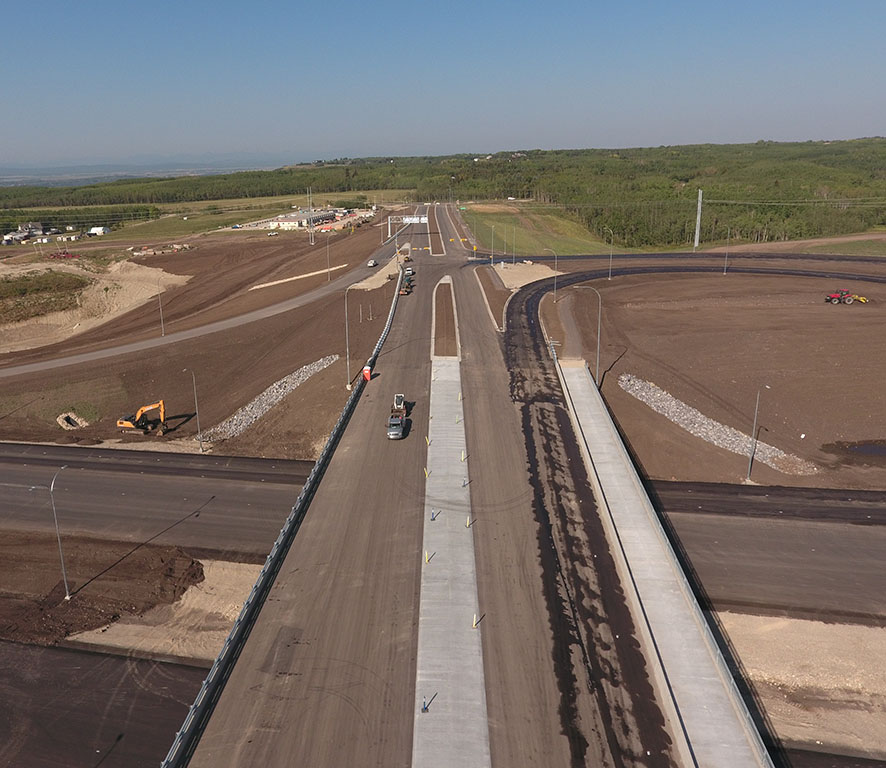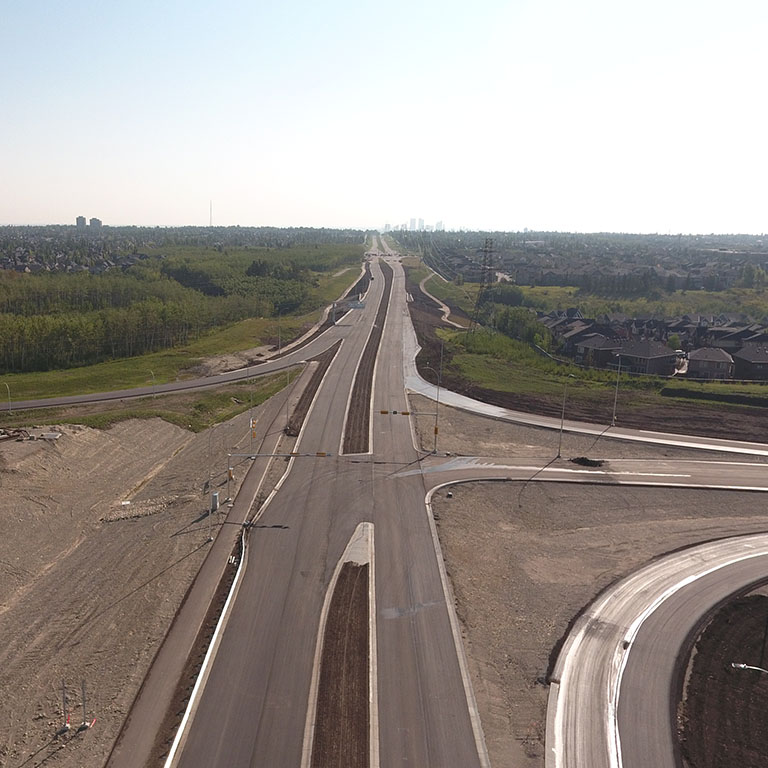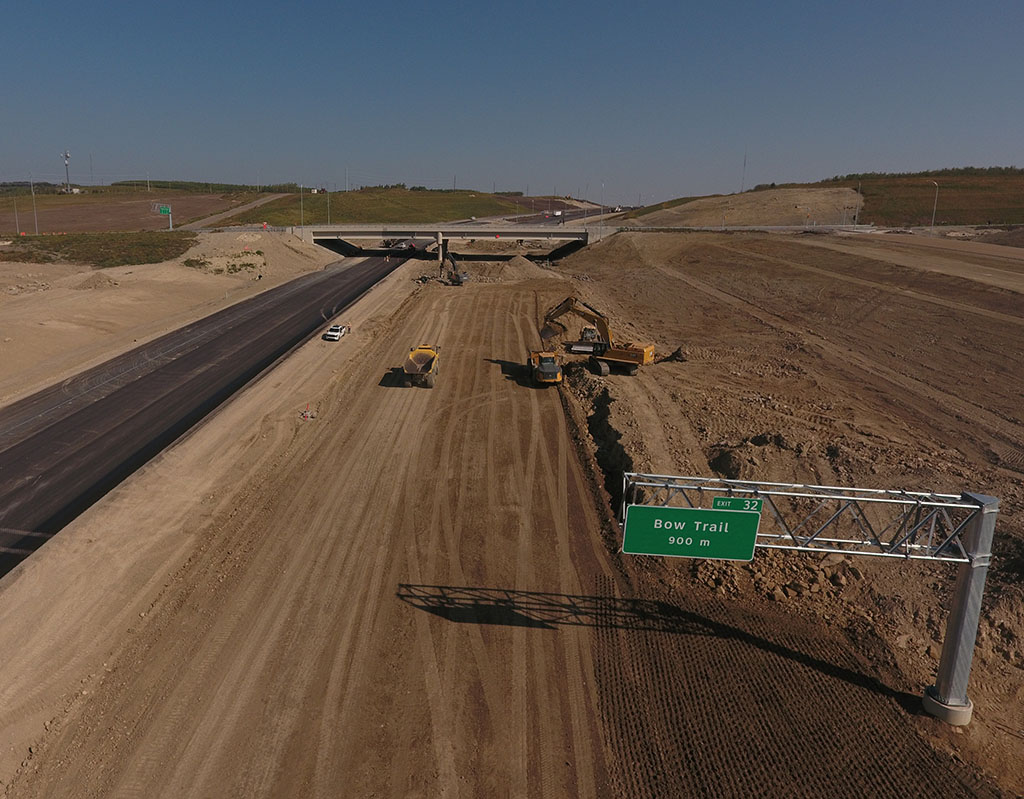Project Update

September 8, 2023

Protecting Head Slopes and Embankments
When dirt is mounded to form a bridge abutment, the slope of the abutment from its highest point to the ground is called the head slope (picture the shortest side of a scalene triangle). Head slopes are visible from underneath the bridge. The backfilled area behind the bridge abutments is the embankment.

Structural slopes must be protected from erosion to remain stable. There are several ways to protect head slopes, but in high-traffic urban areas where conditions can be punishing and aesthetics are a factor, concrete slope protection is the preferred method. Embankment slopes can be stabilized with grass or concrete.
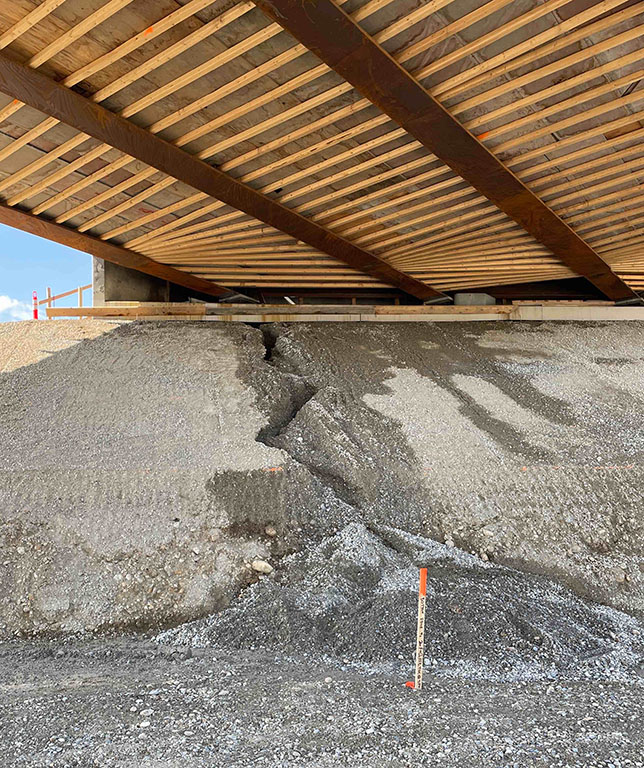
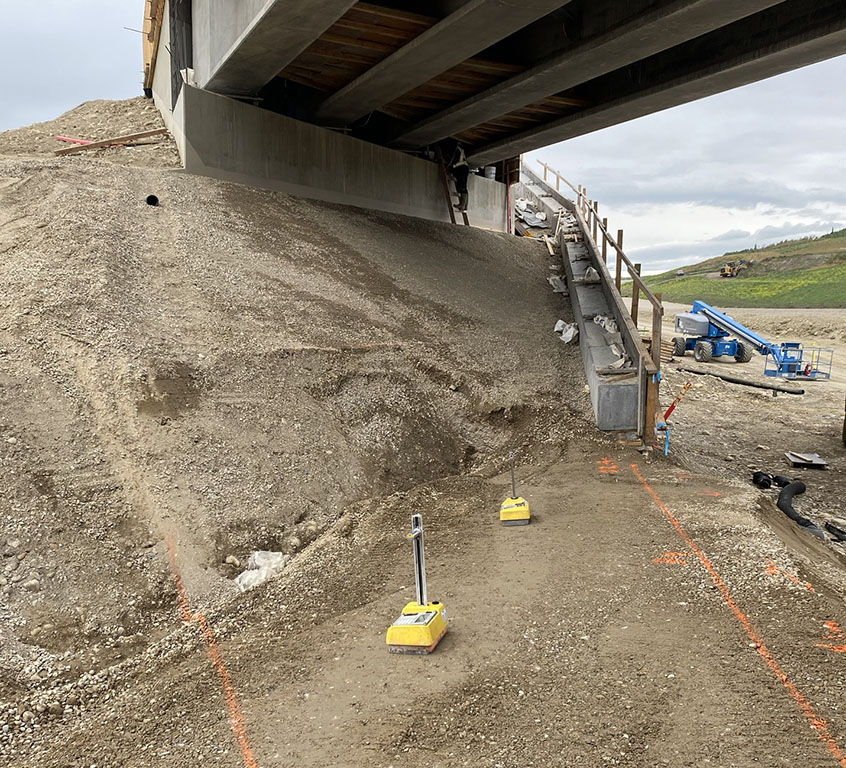
The materials and process for slope protection are similar to the materials and process for building roads and bridges. A compacted layer of crushed aggregate (gravel) forms the base and the concrete is reinforced with wire mesh or rebar. The wire mesh or steel reinforcement is placed on risers to suspend it in the middle of the concrete when it is poured.
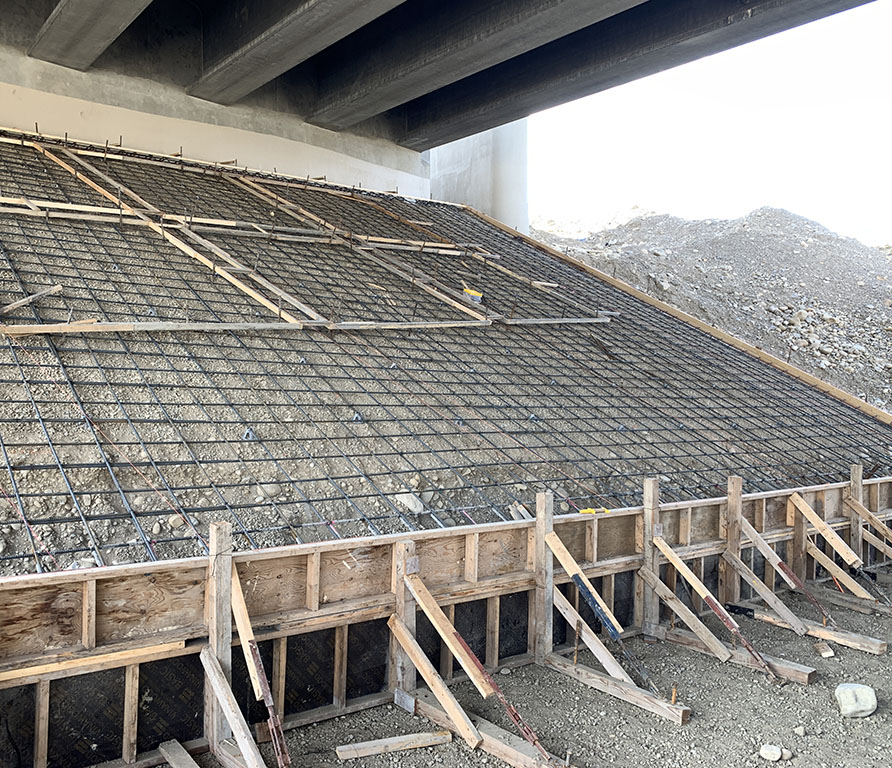
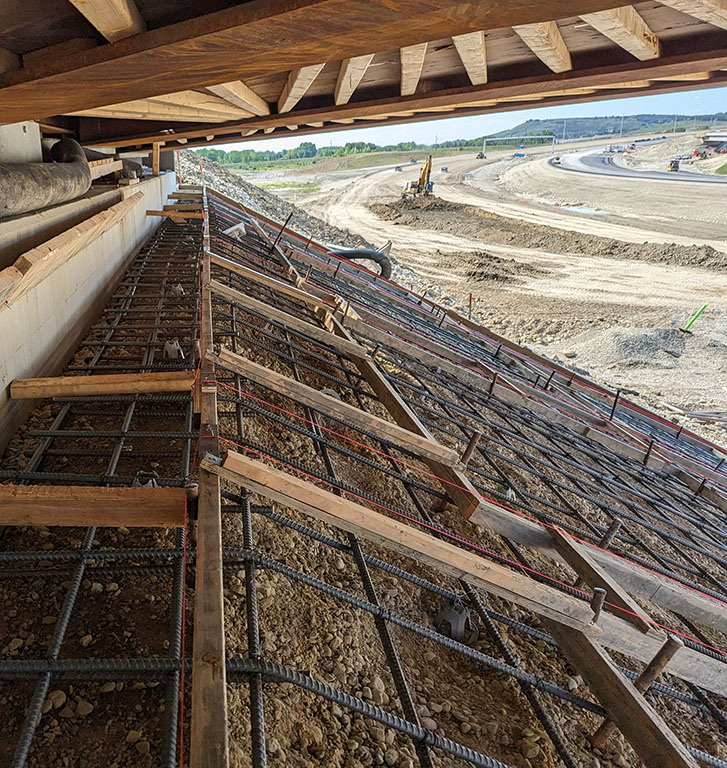
The process for curing concrete is called hydration (the chemical reaction between the cement in the concrete and water). As water evaporates during the curing process and continues long after the concrete has hardened, the concrete shrinks and can cause cracking. To control shrinkage, the concrete is placed in equal horizontal or vertical strips, allowing one strip to cure before the adjacent strip is placed. This alternation creates cold joints (where two concrete pours meet) – the controlled shrinkage happens at this cold joint.
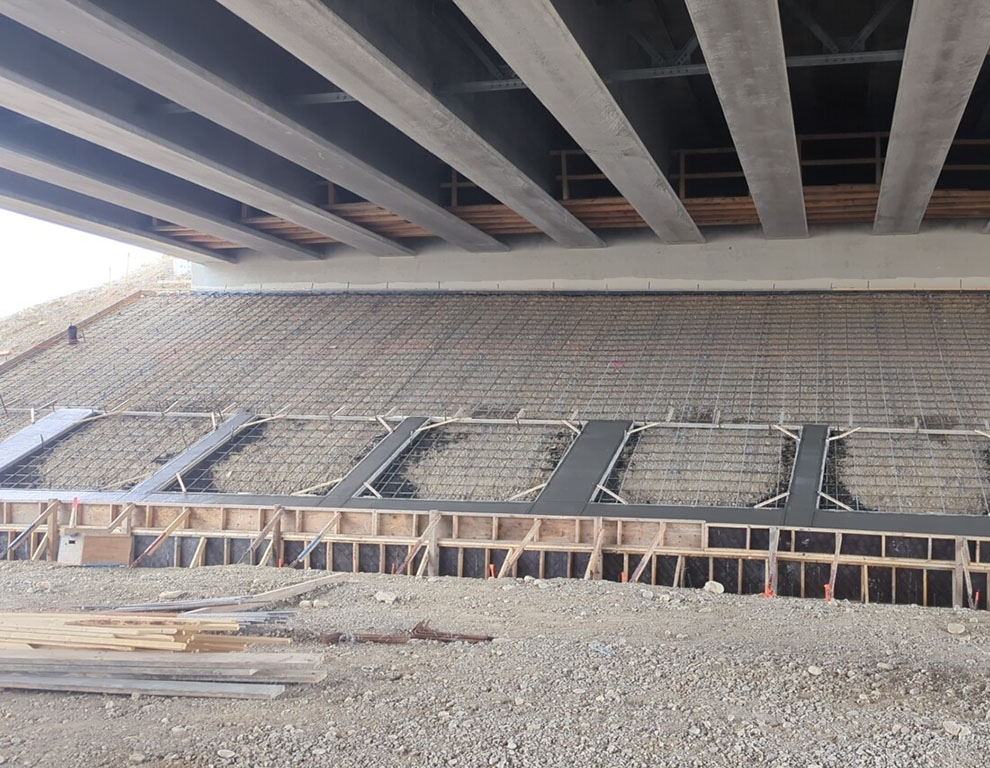
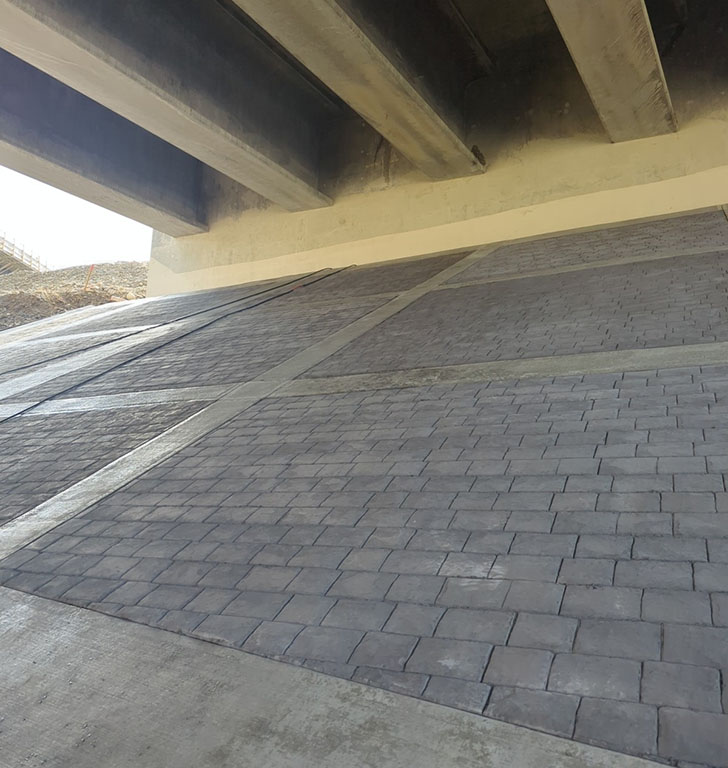
On the Highway 8 flyover embankment slopes, concrete erosion control mats are being used.


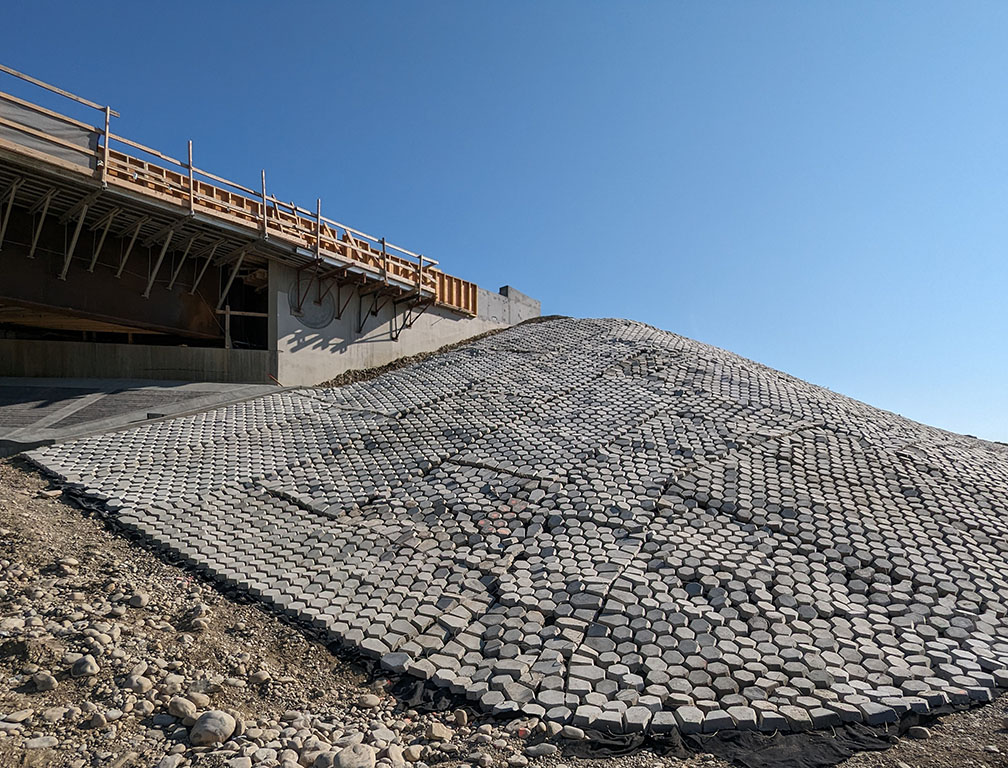
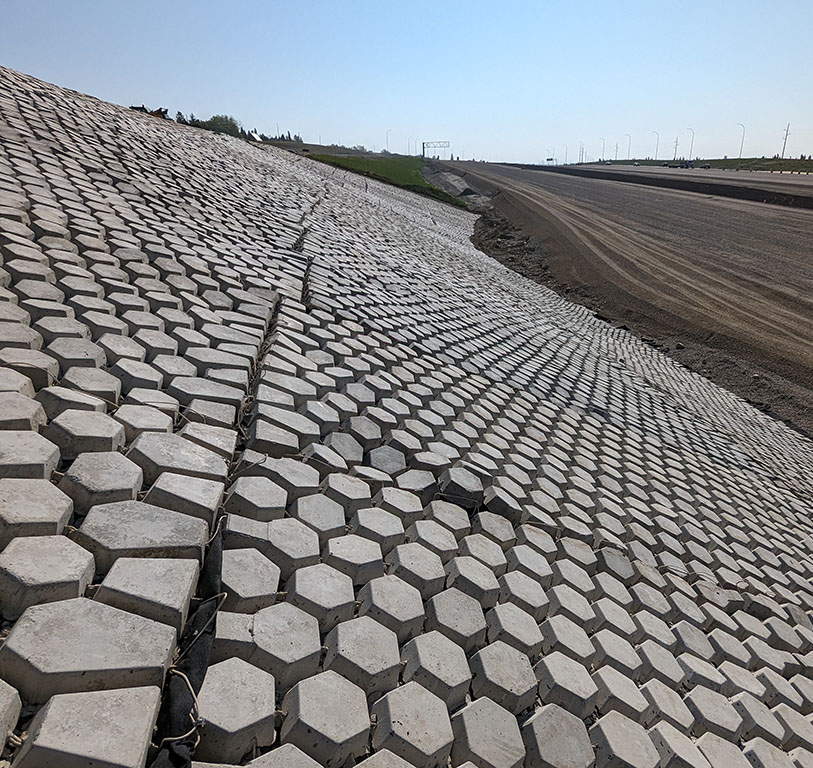
Bow Trail Interchange
The Bow Trail lanes between 85 Street S.W. and 101 Street S.W. are paved and sign structures have been installed. Work continues on the ramp connections and northbound Stoney Trail lanes.
